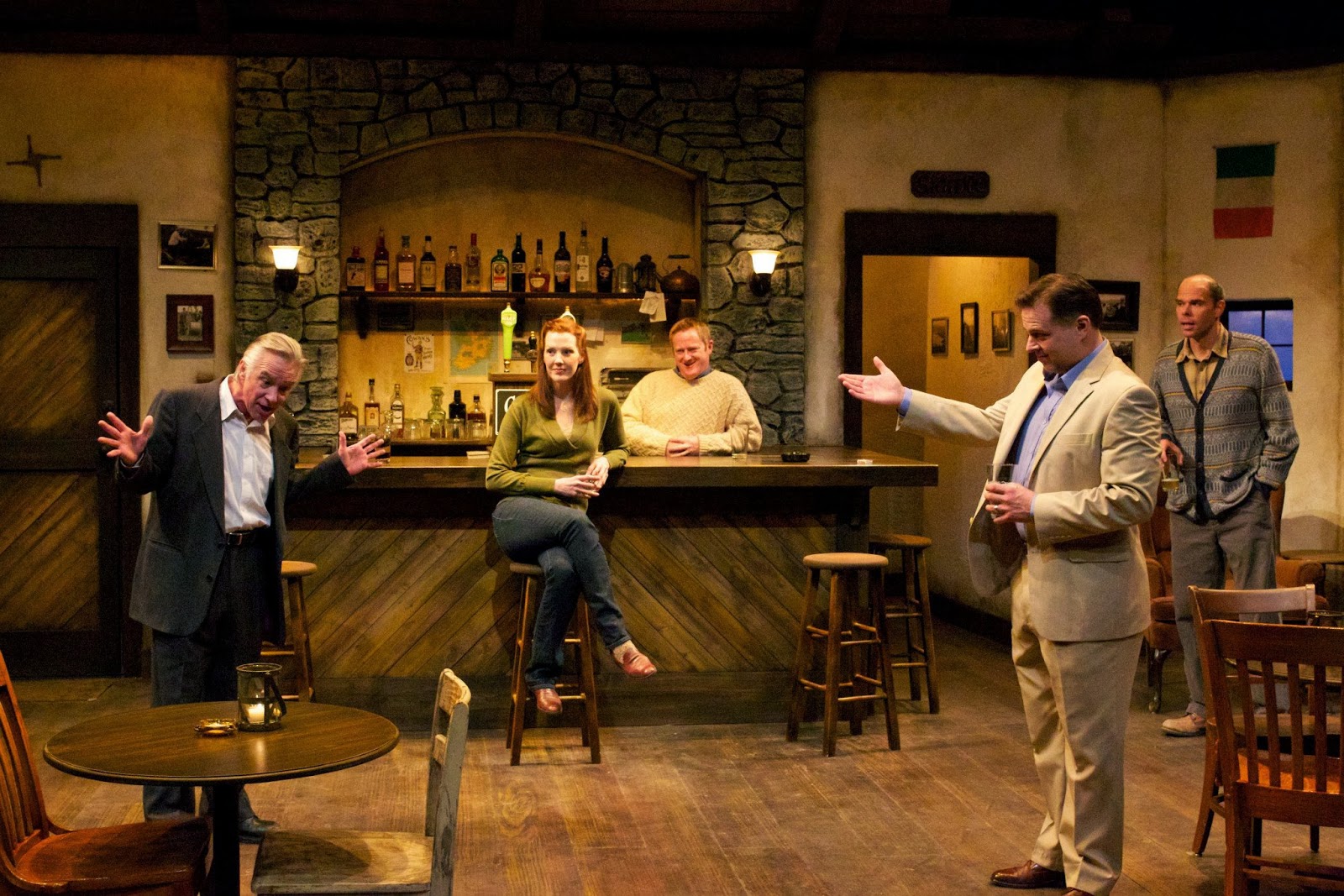Playwright: Deborah Brevoort
Company: Coal Creek Theater of Louisville
Venue: Louisville Center for the Arts, 801 Grant Avenue, Louisville, CO 80027
Running Time: 90 minutes (no intermission)
Date of Performance: Saturday, February 22, 2014
I have readers who are probably too young to remember the December 21, 1988 terrorist attack on Pan Am flight 103. Those who do remember the event may have forgotten some of the details. We should all know about Pan Am flight 103, and it must not be forgotten. Therefore, I have included links to web pages describing the attack and its aftermath in the NOTES after this review.
Lockerbie is a small town (population 4,009 in the 2001 census) in southwest Scotland. It has been a sleepy place since approximately the year 900 AD. That all changed on December 21, 1988 when Pan Am flight 103 crashed into the stunned community. A total of 270 people perished that day, including 11 on the ground in Lockerbie. The Women of Lockerbie tells the story of how that day changed everything for the survivors, and how they coped with the tragedy.
The play takes place on December 21, 1995, in the hills outside of Lockerbie. It is seven years after the crash, and Bill (Steve Rausch) and Madeline (Mary Kay Irving) have come to Lockerbie from New Jersey, searching for their son. He was on flight 103, but his remains were never located. Madeline is obsessed; she needs some tangible evidence that her son died that day. Bill is resigned to his loss, but supports his wife the best he can.
The script balances our most powerful emotions: love and hate. Love for those we lost, hatred for those responsible. It's a delicate balance; harboring both emotions simultaneously can be destructive. Olive (Anne Sandoe) and the other women of Lockerbie know this; convincing Madeline provides a profound emotional arc to the performance. Her bottomless grief is logical and understandable, but it is also destructive. Bill is on the verge of giving up on her.
To say the premise of The Women of Lockerbie makes for interesting drama is a pitiful understatement. It is better to think of the script as a dramatic gold mine. Director Larisa Netterlund and her cast skillfully mine that gold, making The Women of Lockerbie one of the best shows I've ever seen from the Coal Creek company.
Netterlund is working in a very small space, on a very tight budget, and with a cast and crew of volunteers, most of whom probably have day jobs. That said, however, do NOT lower your expectations. She has put together a crackerjack cast and a workable, if symbolic, set. The result is a minor miracle of a theater experience.
 |
| Cast of "The Women of Lockerbie" |
Steve Rausch and Mary Kay Irving deliver as the grieving couple. Irving, in particular, acts as if she is very familiar with loss and grief. Her emotions are genuine, and her quest for closure is the key plot element in the show.
Anne Sandoe (Olive) has resolved her internal battle between love and hate, and she helps Madeline resolves hers as well. In such an intimate space, the audience has the benefit of seeing the gestures and facial expressions close up. Sandoe is a joy to watch; she is completely immersed in her character. Her facial expressions repeatedly exposed the profound loss and grief that all survivors endure.
Mary Secor (Hattie) has a secondary/supporting role, but she plays it with a zealous charm. She's a spark plug, and an inspiration to all of us. The script gives her a chance to seize an opportunity and make a difference. Secor makes a difference with her character as well, bringing a simple but powerful woman to life.
The Women of Lockerbie is meaningful theater done very well. It puts Pan Am flight 103 back on my radar screen. It turns terrorism into opportunities: opportunities to grieve, and opportunities to confront and defeat hate. It's a story of how a few strong, brave women can make a very big difference. The Women of Lockerbie got a long, sincere standing ovation. It was a well deserved but insufficient reward for such a powerful performance.
NOTES:
Arrive early enough, or stay late enough, to view the photos in the lobby and the theater. They are relevant to the performance, and to the memory of Pan Am flight 103.
This show closes on March 8, 2014.
This show is suitable for all ages. However, there are some gruesome descriptions of the victims of Pan Am flight 103. Parental guidance is advised.
Relevant webites:
Disclaimer:
This show is about grief. I have recently suffered my own great loss and profound grief. I have done my best to be objective about The Women of Lockerbie, but my vision may be clouded somewhat for personal reasons. Readers should be aware that this show evoked some painful emotional moments for me.
Pre or post show dining suggestion:
Waterloo, 809 S. Main Street, Louisville. Besides the good food, you'll find music memorabilia around the room. "God Bless Johnny Cash" is the motto here. Waterloo is casual, inexpensive, and just minutes from the theater. The Harvest Spinach Salad (fresh spinach, apples, dried cranberries, gorgonzola crumbles & toasted almonds, tossed with house-made warm maple vinaigrette) is delicious.
Photo Credits: Coal Creek Theater of Louisville.
Director: Larisa Netterlund
Set Design: Chris Pash & Pam Bennett
Sound Design: Larisa Netterlund
Lighting Design: Dene Morrow
Costume Design: Joy Robins
Cast:
Olive: Anne Sandoe
Bill: Steve Rausch
Madeline: Mary Kay Irving
George: Dan Shock
Hattie: Mary Secor
Chorus: Nanci Van Fleet, Brandy McGreer, Stephany Roscoe















